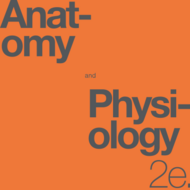Anatomy and Physiology I & II (GHC)
(View Complete Item Description)This Open Course is an adaptation of OpenStax Anatomy and Physiology and was created under a Round Nine ALG Textbook Transformation Grant. Topics covered include: Chemical Organization Cellular Organization Tissue Organization Integumentary System Skeletal System Muscular System Nervous System Endocrine System Cardiovascular System Lymphatic System Respiratory System Digestive System Reproductive System
Material Type: Full Course















